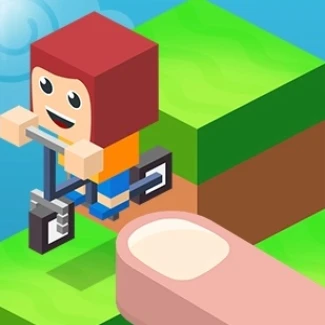Description
Average Rating 5.0 (1 Total Vote)The Ultimate Guide to VEX Challenges Game
Introduction
Welcome to the world of VEX robotics! In this guide, we will explore the exciting world of VEX Challenges Game, where teams of students from around the globe come together to design, build, and compete with their own robots. Whether you are a novice or an experienced competitor, this guide is here to help you navigate the challenges and discover the strategies that will lead you to victory.
What is VEX?
VEX is a robotics platform that offers students of all ages the opportunity to explore and engage with STEM (Science, Technology, Engineering, and Mathematics) concepts through hands-on robot building and competition. It provides a structured and comprehensive approach to learning robotics, making it accessible to students at all levels of expertise.
Understanding VEX Challenges Game
VEX Challenges Game is a series of competitive events where teams compete using robots they design and build themselves. Each season, a new game is introduced, presenting teams with unique challenges and objectives. The game is played on a custom-designed field, and teams must strategize and collaborate to outscore their opponents.
The Game Field
The VEX Challenges Game field is a carefully designed arena that serves as the battleground for the competition. It features various game elements and obstacles that teams must interact with to score points. The field changes each season, offering a new set of challenges and forcing teams to adapt their strategies.
The Game Manual
Each season, VEX releases a detailed game manual that outlines the rules, objectives, and restrictions of the game. Teams must familiarize themselves with the game manual to understand how to score points, what the limitations are, and how to avoid penalties. The manual also provides important information on robot specifications and restrictions.
Designing and Building Your Robot
Once teams have a clear understanding of the game and its objectives, they can start designing and building their robot. This is where creativity, problem-solving, and technical skills come into play. Teams must brainstorm ideas, create prototypes, and iterate on their designs to create a robot that can perform the required tasks and score points effectively.
Key Considerations for Robot Design
- Scoring Mechanisms: Determine how your robot will interact with the game elements to score points.
- Drive System: Choose a drive system that provides the right balance of speed and maneuverability for your strategy.
- Power Source: Decide on the power source for your robot, whether it’s batteries or a built-in power supply.
- Sensors: Identify the sensors you’ll need to navigate the field and interact with game elements.
- Programming: Develop the software that will control your robot’s movements, actions, and autonomous functions.
Strategies for Success
To excel in VEX Challenges Game, teams must develop effective strategies that align with their robot’s capabilities. Here are some key strategies to consider:
1. Experiment and Iterate
The first design might not always be the best. Encourage your team to experiment with different ideas, test prototypes, and iterate on their designs. The more you refine your robot, the better it will perform on the field.
2. Collaborate and Communicate
Effective communication and collaboration are crucial for a successful VEX team. Encourage open discussions, delegate tasks according to team members’ strengths, and ensure everyone has a clear understanding of the game and strategy.
3. Prioritize Scoring Opportunities
Not all game elements are equal. Identify the high-value scoring opportunities and focus your strategy around them. Prioritize tasks that yield the most points and optimize your robot’s capabilities accordingly.
4. Scout Your Opponents
Understanding your opponents’ robots and strategies can give you a competitive edge. Take the time to observe and analyze other teams’ robots during matches. Look for patterns, weaknesses, and strategies you can exploit.
5. Practice, Practice, Practice
The more you practice, the better prepared you’ll be for the competition. Set up mock game fields, run practice matches, and simulate real match conditions as closely as possible. Practicing as a team builds cohesion and improves overall performance.
Conclusion
Participating in VEX Challenges Game is an exhilarating experience that puts your creativity, problem-solving, and teamwork skills to the test. By understanding the game, designing a capable robot, and implementing effective strategies, you can increase your chances of success. So, embrace the challenges, think outside the box, and let the games begin!
Frequently Asked Questions
1. Can I participate in VEX Challenges Game if I have no previous robotics experience?
Absolutely! VEX Challenges Game welcomes students of all skill levels. The competition provides a learning platform that allows beginners to gain hands-on experience and grow their skills alongside more experienced competitors. So don’t be afraid to jump in!
2. How many team members can participate in VEX Challenges Game?
Teams can have up to 10 members. However, note that the game field has a limited area, and having too many team members might make it challenging to collaborate effectively during matches.
3. How long does a VEX Challenges Game season typically last?
The duration of a VEX Challenges Game season can vary, but it usually lasts several months. It includes regional and national competitions, leading up to the annual VEX Robotics World Championship.
4. Are there any age restrictions for participating in VEX Challenges Game?
VEX Challenges Game is open to students from elementary school to college level. The competition offers different divisions based on age and experience, ensuring fair and competitive matches.
5. Can we use pre-built robot kits for VEX Challenges Game?
Teams must design and build their robots using VEX parts and components. While pre-built kits can serve as a starting point, teams must modify and customize their robots to meet the specific requirements of the game.

Breaking the Bank

Completing the Mission

Stealing the Diamond

Infiltrating the Airship

Fleeing the Complex

Escaping the Prison

Ninja Cat Exploit

Pizza Tower

Hop & Pop It

WordSlide

Farm Match Seasons

Down The Hill

3 Pandas in Japan

Clash Of Tanks

Five Nights at Freddy’s Sister Location

Tap Cricket

Pac-Level

Make 24

Master Balance









